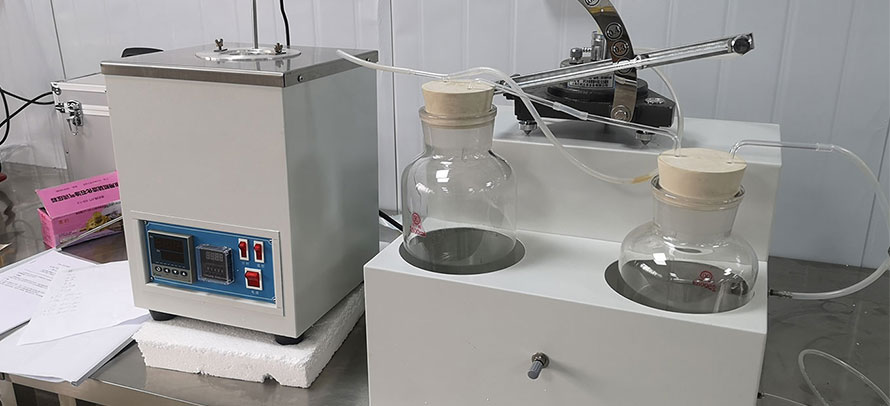(Equivalent Test Method: IP 408)
EXPLANATION
Alcohols, ethers, and other oxygenates are added to gasoline to increase the octane number and to reduce tailpipe emission of carbon monoxide. They must be added in the proper concentration and ratios to meet regulatory limitations and to avoid phase separation and problems with engine performance or efficiency. This test method provides sufficient oxygen-to-hydrocarbon selectivity and sensitivity to allow determination of oxygenates in gasoline samples without interference from the bulk hydrocarbon matrix. This test method is applicable to gasolines having a FBP not greater than 220° C and oxygenates having a boiling point limit of 130° C. It is applicable when oxygenates are present in the 0.1 to 20 mass % range.
This test method can determine the mass concentration of each oxygenate compound present in a gasoline. For calibration purposes, this requires knowledge of the identity of each oxygenate being determined. However, the oxygen-selective detector used exhibits a response to total amount of oxygen present whether individual compounds are identified or not.
Test Methods D4815 and D5845 for the determination of MTBE in gasoline have been described earlier. Test Method D6293 for the determination of O-PONA hydrocarbons in fuels is described next.
TEST SUMMARY
An internal standard of a noninterfering oxygenate (for example, 1,2-dimethoxyethane) is added in a quantitative proportion to the gasoline sample. An aliquot of this mixture is injected into a gas chromatograph equipped with a capillary column operated to ensure separation of the oxygenates. Oxygenates are detected with the oxygen-selective flame ionization detector. Calibration mixtures are used to determine the retention times and relative mass response factors of the oxygenates of interest. The peak area of each oxygenate in the gasoline is measured relative to the peak area of the internal standard. The concentration of each oxygenate is calculated by using a quadratic least-squares fit of the calibration data of each oxygenate.
TEST PRECISION
See the precision in the following table.

The bias of this test method is being developed.

